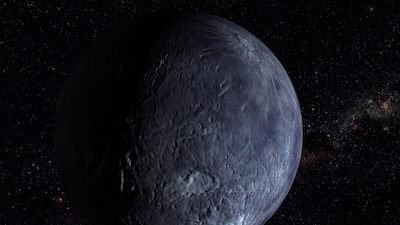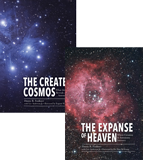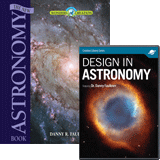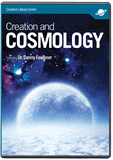
1I/‘Oumuamua: The Discovery of the First Interstellar Asteroid
What Was Found?
The Pan-STARRS (Panoramic Survey Telescope and Rapid Response System) observatory was built to detect near-earth objects (NEOs), asteroids, or comets that have the potential of colliding with earth. Since it went online a decade ago, Pan-STARRS has discovered many new asteroids and comets as well as supernovae and new variable stars. On October 17, 2017, Pan-STARRS discovered an object moving on a highly elliptical orbit.1 From its orbit, the object was assumed to be a comet and initially was given the comet designation C/2017 U1. The C/ prefix indicates the object is a comet, 2017 is the year of discovery, and the U1 suffix indicates it was the first comet discovered in the second half of October.
The object had passed within a quarter of an astronomical unit (AU) of the sun only five weeks before discovery. The AU is the average distance of the earth from the sun. If the object were a comet, its proximity to the sun ought to have sublimed the comet’s ices into sufficient gas to produce a coma, a cloud surrounding the object. However, deep follow-up photographs taken with another telescope failed to reveal a coma.2 Therefore, astronomers concluded the object was a rocky body rather than a comet, an icy body. This led to a change in the designation from C/2017 U1 to A/2017 U1. The A/ prefix refers to an object initially misidentified as a comet but now properly reclassified as an asteroid. However, an unpublished spectrum was featureless and red, similar to spectra of trans-Neptunian objects (TNOs).3 Most astronomers think that TNOs have high ice concentration, which ought to outgas when so close to the sun. The best estimate of its size is about 500 feet.
Its Strange Orbit
These sorts of discoveries and even reclassifications happen often enough, so they normally don’t attract much attention. However, the unique orbit of A/2017 U1 was newsworthy. Objects attracted by gravity move along paths called conic sections. A circle is the simplest conic section, but a circle is a special case of a broader group of conic sections—ellipses. Ellipses are sort of like ovals, or stretched-out circles. We use the term eccentricity to express how much an ellipse is stretched out. A circle has an eccentricity of zero, while the most stretched-out ellipses have eccentricities that approach one. Planets and asteroids (the preferred technical term is minor planets) tend to have orbits with very low eccentricities—they are nearly circular. However, comets tend to have highly eccentric orbits, with eccentricities approaching one for the longest period comets.
Orbits with eccentricities less than one (elliptical orbits) are bound. That is, objects following those orbits periodically orbit the sun. What about a body following a path with eccentricity equal to one? The conic section it follows is a parabola, meaning that the object is making one, and only one, pass by the sun. In that sense, an object following a parabolic orbit is not bound to the sun. Some comets follow parabolic orbits, but they probably are on very highly eccentric elliptical orbits that are observationally indistinguishable from parabolas. Some comets have been observed leaving the sun’s vicinity with slightly hyperbolic orbits, orbits with eccentricity greater than one. These comets have more than enough speed to escape the sun’s gravity entirely. However, these comets did not approach the sun with such high speed. Rather, they received gravitational assists from some of the planets, most notably Jupiter, to eject them from the solar system. This is one of the loss mechanisms for comets that indicate the solar system’s youth.
This highly hyperbolic orbit suggests that A/2017 U1 is not part of the solar system, but instead is an interstellar visitor.
The eccentricity of A/2017 U1 was a whopping 1.1994 (±0.0002), far larger than any previously observed object.4 This highly hyperbolic orbit suggests that A/2017 U1 is not part of the solar system, but instead is an interstellar visitor. Astronomers previously had detected dust they thought was interstellar in origin, but this is the first object clearly to be from outside the solar system. Is it possible that A/2017 U1 is a member of the solar system that recently received a gravitational boost from some other object in the solar system, ejecting it and leaving the false impression it was interstellar? This is not likely. There doesn’t appear to have been any recent close pass to a planet that could account for this. There is a second asteroid belt beyond the orbit of Neptune (the TNOs). Could close interaction of two bodies there have produced this? That is an extremely unlikely scenario. Furthermore, the direction A/2017 U1 came from is close to the solar apex, the direction in space that the sun and solar system are moving (toward the constellation Lyra). We would expect to scoop up interstellar objects from this direction. Furthermore, from its motion, astronomers can determine what velocity A/2017 U1 had when far from the sun’s gravity. That velocity is a match for stars typical in the solar neighborhood, again indicating an interstellar origin.
With all these considerations, it is very probable that astronomers have found the first interstellar interloper. This prompted the International Astronomical Union (IAU) to establish a new category of objects: interstellar objects. Interstellar objects officially are indicated by the letter I preceded by a sequential number in order of discovery. Therefore A/2017 U1 has the alternate designation 1I. Rules of nomenclature for asteroids established by the IAU permit the discoverers of A/2017 U1 to choose a name if they wish. They chose the name ‘Oumuamua, from Hawaiian roughly translated into English as “a scout, or messenger, from the past.” If one prefers to use the asteroid nomenclature, then technically one ought to refer to A/2017 U1 as 1I/‘Oumuamua.
Conclusion
Does this interesting discovery have anything to tell us about origins? Evolutionary astronomers think that asteroids and comets are leftovers from the formation of the solar system 4.55 billion years ago. Most matter in a presolar nebula supposedly condensed to form the sun, while a small fraction of the matter flattened into a disk. Within that disk, planets and their natural satellites, as well as asteroids and comets, formed. During this process of formation, the orbits of many of the smaller objects, asteroids and comets, were stirred by the planets’ gravity. This led to ejection of some of those smaller objects from the solar system. Indeed, as already mentioned, we occasionally see comets ejected from the solar system today. However, according to this theory, many comet nuclei remained in the Kuiper belt and Oort cloud. Further gravitational tugs from the outer planets and from bodies outside the solar system perturb the orbits of objects in the Kuiper belt and Oort cloud to send comets into the inner solar system as older comets wear out. Most astronomers assume that other stars underwent similar formation, along with orbiting planets and smaller bodies, with some of those smaller bodies ejected as well. Hence, to evolutionary astronomers, discovery of 1I ‘Oumuamua is confirmation of this process and the existence of the Oort cloud.
The discovery of 1I ‘Oumuamua is consistent with what we know about creation.
Does this mean that the discovery of 1I ‘Oumuamua proves the evolutionary paradigm? Hardly. Its discovery merely has been interpreted in terms of the evolutionary paradigm. There are other possibilities. For instance, creationists generally think that God created asteroids and comets in the solar system, along with all other astronomical bodies on Day Four. We also recognize that in the modern sense of our understanding of stars, the sun is a star. Therefore, there is nothing in the biblical model of creation that precludes other stars having orbiting planets, along with asteroids and comets. With so many strange and wonderful things that astronomers have discovered, such as quasars and black holes, is it so remarkable that God may have created small interstellar bodies as well? While we creationists may not have explicitly predicted such a thing, the discovery of 1I ‘Oumuamua is consistent with what we know about creation.
Footnotes
- “Small Asteroid or Comet ‘Visits’ from Beyond the Solar System,” NASA, October 26, 2017, https://www.nasa.gov/feature/jpl/small-asteroid-or-comet-visits-from-beyond-the-solar-system.
- “MPEC 2017-U183: A/2017 U1,” The International Astronomical Union Minor Planet Center, October 25, 2017, http://www.minorplanetcenter.net/mpec/K17/K17UI3.html.
- @FitzsimmonsAlan, October 27, 2017, https://twitter.com/FitzsimmonsAlan/status/923928561722982400.
- “JPL Small-Body Database Browser,” Jet Propulsion Laboratory, https://ssd.jpl.nasa.gov/sbdb.cgi?sstr=2017U1;cad=1.
Recommended Resources

Answers in Genesis is an apologetics ministry, dedicated to helping Christians defend their faith and proclaim the good news of Jesus Christ.
- Customer Service 800.778.3390
- © 2024 Answers in Genesis







